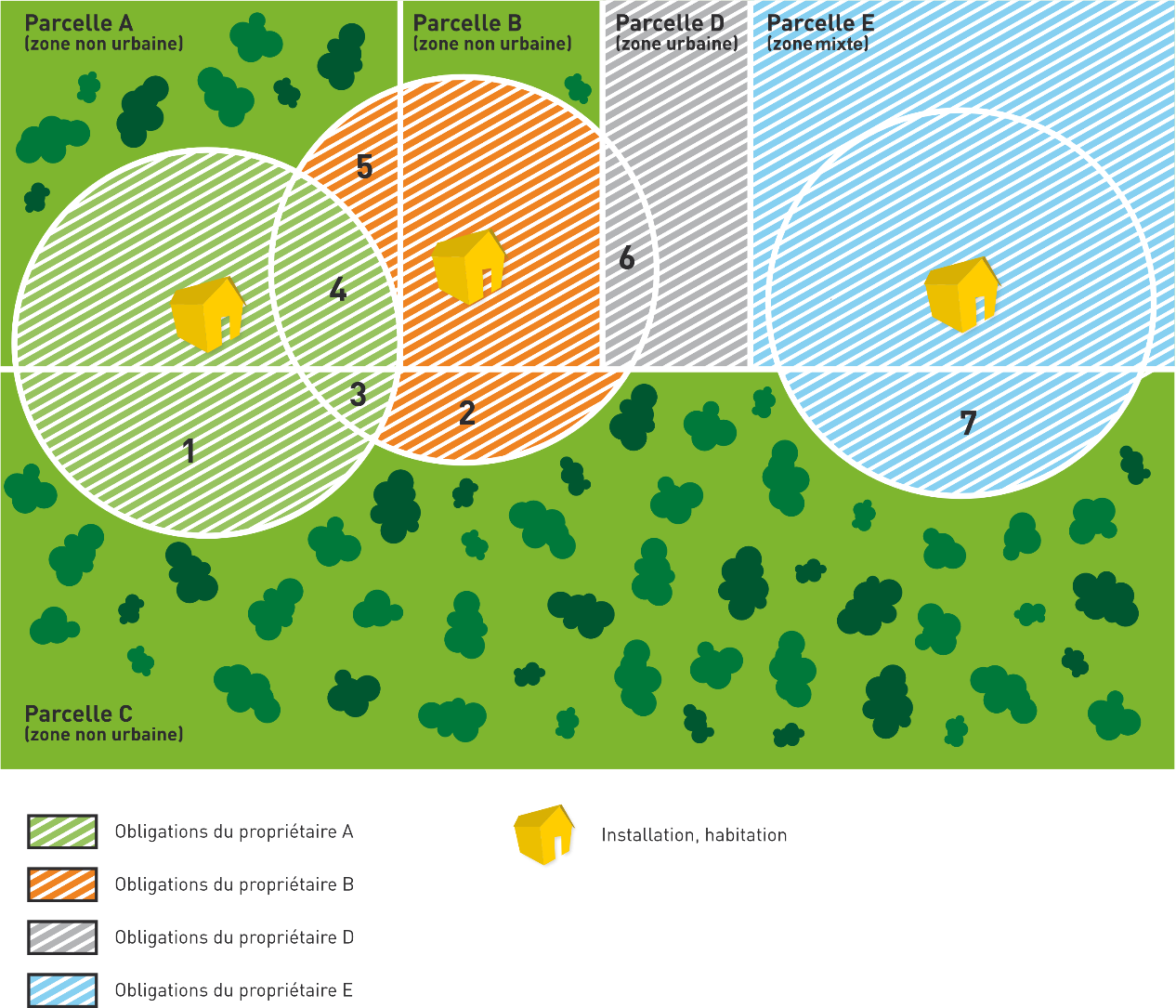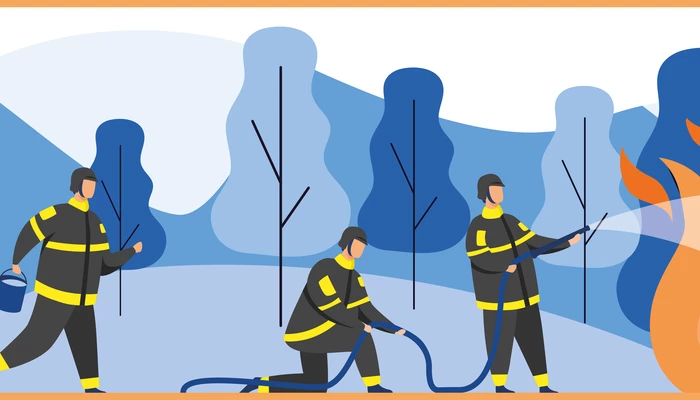Clearing undergrowth to prevent fire risk
Clearing and maintaining undergrowth is a legal obligation in Montpellier and in areas exposed to the risk of forest fires, under penalty of fine. Find out why, where, how and when to clear undergrowth.
When to clear undergrowth?
The most favorable periods for clearing brush are of course autumn, winter and early spring when plants have lost their leaves. Brush clearing work in summer, and at times of the day when the risk of fire is greatest (high temperatures and low humidity), should be avoided.
The most favourable periods for brush clearing are autumn, winter and early spring when plants have lost their leaves.Why clear undergrowth?
- Protect yourself, by protecting your home and land
- Protect the forest by limiting the development of an accidental outbreak of fire from your property!
- Secure firefighting personnel
- Be in compliance with regulations
Where to clear brush?
In exposed areas (woods, land in the nature of wood, forest, plantations of forest species, reforestation, moorland, scrub scrub scrubland) and up to a distance of 200 m from such land, brush clearance and maintenance in a state of brush clearance must be carried out:
- At a depth of 50m around constructions and installations and 5m on either side of private access roads to buildings,
- On the entire surface of the property's land, whether built on or not, located in an urban zone in the current urban planning document,
- On land located in zones delimited and specifically defined as having to be cleared of undergrowth and maintained in a cleared state for the protection of constructions, by an approved forest fire risk prevention plan (PPRIF), the work being the responsibility of the owner of constructions, building sites and installations of any kind for the protection of which the easement is established.
How to clear undergrowth?
You can, depending on your availability:
- Clear brush yourself with suitable equipment,
- Hire a brush-clearing company (group together with your neighbors to get a good price and uniform results on your properties).
On exposed areas, carry out:
- Trimming and removal of low, spontaneous woody vegetation;
- Trimming and removal of dead, diseased or overgrown trees and shrubs;
- Removal of the most flammable species (broom, heather, callune, thorny gorse, thyme, Aleppo pine, .);
- Trimming and eliminating excessively dense trees and shrubs so that the crown of each tree or shrub retained is at least 5 m from its immediate neighbor. Trees grouped together in clumps may be retained and treated as a single individual, provided that the diameter of the clump is less than 10 m. Trees and shrubs must be kept at a distance of at least 5 m from their crowns;
- All trees and shrubs must be cut back and removed within the perimeter of a construction so that the latter is at least 3 m away from the crowns of the trees and shrubs kept. By way of derogation, remarkable trees or shrubs, or elements of Languedoc or traditional heritage, located less than 3 m (including crowns) from a building, may be retained provided they are sufficiently isolated from the combustible stand so as not to be subject to their prefectoral order relating to brush clearance and maintenance in a brush-cleared state;
- A pruning of retained trees and shrubs 3 m and over to between 30% and 50% of their height ;
- Trimming and removal of all vegetation located in line with the roadway axis on roads open to public traffic, as well as private roads open to public traffic or giving access to constructions, building sites and installations of any kind, over a 4 m gauge, i.e. a minimum height and width of 4 m;
- Removal of all slash.
As an exception to the provisions set out above, cultivated and regularly maintained agricultural and pastoral land, orchards and olive groves are sufficient for protection against forest fires and do not require specific treatment.

Vegetation to be cut back:
- Brushwood
- Undergrowth (bushes and shrubs)
- Dead vegetation
- High grass
- Low branches on trees
- Most flammable species
Vegetation to be retained:
- Large isolated trees, including remarkable trees or shrubs or heritage features (a space of 3 m must separate branches from buildings)
- Tussocks of shrubs
- Some distant young trees
Maintaining undergrowth must be perennial. You must maintain and keep in a brush-cleared state as soon as the average height of woody vegetation regrowth exceeds 40 cm.
Note:
Lands in the nature of woods, forests, plantations of forest species, reforestations, moors, scrubland and garrigues with a cumulative surface area of less than the 4-hectare threshold are excluded from the scope of application, as are hedges and "linear woodlands" made up of lands in the nature of woods, forests, plantations of forest species, reforestations, moors, scrubland and garrigues with a maximum width of 50 m whatever their length;
Clearance is also mandatory for 5 m along public roads, power lines and railroad lines, which can lead to very complex cases, when several obligations overlap. In such cases, the work is the responsibility of the owner of the constructions, building sites, works and installations of any kind.
How to dispose of cut vegetation?
To dispose of cut vegetation, you can:
- Drop them off at one of the déchèteries du territoire
- Compost your cuttings and dead leaves (shredding reduces the fuel but doesn't eliminate it!)
The use of fire as a means of destroying your brushwood slash may be authorized to owners or assignees, but should only be used as a last resort.
Important: departmental health regulations prohibit the incineration of green waste and household waste in urban areas.
.Legal provisions
Clearing undergrowth is an obligation mainly linked to:
- Article L322-3 of the Forestry Code where maintaining undergrowth is mandatory on areas located within 200 meters of land in the nature of woods, forests, moors, scrubland, garrigue, plantations or reforestation.
- Article L-131-10 of the Forestry Code, which defines operations to reduce plant fuels of all kinds with the aim of reducing the intensity and limiting the spread of fires.
In the event of non-compliance with regulations
You expose yourself to penalties and a fine of up to €1,500. In addition, the authorities can give you formal notice to carry out the work, and impose a fine of €30 per m² subject to the brush clearance obligation. The commune, as a last resort and after formal notice, can have the work carried out at your expense and make you bear all the costs.
In the event of a claim, your home insurance will not systematically cover the damage. You may also be held liable, if the excessive density of vegetation present on your property has facilitated the spread of a fire.
Frequently asked questions




